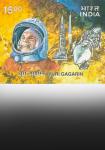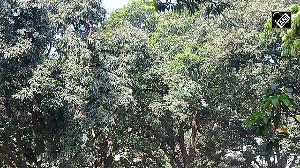As a part of our series of articles on the key excerpts from the Economic Survey, in this article, we focus on the banking sector, which types gives a perspective about the sources and use of money by corporates, retail and the like.
Monetary policy. . .
To start of with, while the previous monetary policy backed adequate liquidity to meet credit growth and support investment demand along with maintaining the 'conducive' interest rate environment, during the current fiscal, the RBI focused on curbing excess liquidity while at the same time facing the challenges of rising inflation on the back of a global rise in crude oil prices.
To put things in perspective, the economy witnessed excess liquidity of nearly Rs 810 bn. During the second half of the year 2004, inflation jumped to 8.7% as against the targeted 5%.
CRR hikes. . .
Faced by these challenges, the apex banking authority announced a hike in CRR (Cash Reserve Ratio) by 50 basis points in two stages during the second half of 2004. The move not only helped RBI mop up nearly Rs 91 bn from the banking system but also helped moderate any inflationary expectations.
The focus continued to remain on the stability in the financial market conditions as a result of which, no significant rate hikes were announced.
Bank credit gains momentum. . .
As per the annual policy statement of the RBI for FY05, the growth in broad money (money with the public, demand and time deposits with banks) is likely to witness a growth of over 14% as against 16.6% growth witnessed in the previous fiscal.
The major contribution to the growth in broad money in the current fiscal has come from high bank credit to the commercial sector and net foreign exchange assets of the banking sector. To put things in perspective, bank credit to the commercial sector has witnessed growth of 20.4% (up to Jan 21, 2005 as against a meager 7.9% during the corresponding period last fiscal.
Net RBI credit to the government, which was the main driving force behind the reserve money growth until FY01, is now been replaced by the net foreign exchange assets (NFA) due to the fact that the country has witnessed a large chunk of capital inflow over the last fiscal.
To put things in perspective, while the NFA witnessed a growth of 15.9% during the current fiscal on the back of a 32.8% growth in FY04, RBI credit to the government has witnessed a decline of 69.9% after a decline of 66.9% during FY04.
Concerned over the rigidity in lending rates at the lower end, despite the decline in deposit rates, the RBI advised banks to announce their BPLRs (benchmark prime lending rates) based on their actual cost of funds, operating expenses and a minimum margin to cover regulatory requirement.
As a result, the BPLRs witnessed a dip of around 25 to 50 basis points among the leading banks, which further helped bank credit.
| (Rs bn) | FY03 | FY04 | 9mFY05 |
| Gross bank credit | 6,695 | 7,644 | 8,602 |
| Public food credit | 495 | 360 | 397 |
| (%) of gross bank credit | 7.4% | 4.7% | 4.6% |
| Gross non-food credit | 6,201 | 7,284 | 8,205 |
| (%) of gross bank credit | 92.6% | 95.3% | 95.4% |
| Housing sector credit | 366 | 520 | 681 |
| (%) of gross bank credit | 5.5% | 6.8% | 7.9% |
| Others | 175 | 191 | 209 |
| (%) of gross bank credit | 2.6% | 2.5% | 2.4% |
Bank credit by scheduled commercial banks (SCBs) increased by nearly 24% in the current fiscal led by non-food credit, which witnessed a growth of over 24% during the period under review as against a decent growth of nearly 12% in the corresponding period last fiscal.
Based on our interaction with the banking sector, the growth has been led by increased disbursals to the housing sector and towards meeting the working capital requirements of corporates. At the same time, food credit increased by 15.2% during the current year.
Outlook
The RBI expects the flow of capital into the economy to continue over the medium term, which could dampen the apex bank's efforts to control liquidity.
Further, the weakening dollar against the rupee due to the concerns regarding the US economy has put pressure on the bank, as this could affect the country's exports.
Although the RBI introduced the BPLRs during the current fiscal, besides AAA rated corporates, access to cheaper finance has been an issue, despite room for further lowering of lending rates by banks.
The continuing reduction in the NPA levels along with stronger balance sheets of the corporates on the back of robust economy should help in further reduction in interest rates towards the non-food sector.
During the second half of the current fiscal, higher credit offtake by the non-food sector led to a decline in liquidity in the banking system.
To put things in perspective, 9mFY05 witnessed growth of 9% in the manufacturing activity and this trend is likely to continue going forward. As a result, the growth in non-food credit offtake is likely to continue.
Having said that, the banking sector is faced with two major challenges going forward.
Complying with the Basel II norms
Maintaining the quality of assets, in times of robust demand for credit.
The next three years, in our view, will differentiate the wheat from the chaff among banking companies!
This is part of Equitymaster's Budget 2005-06 series. Equitymaster.com is one of India's premier finance portals. The Web site offers a user-friendly portfolio tracker, a weekly buy/sell recommendation service and research reports on India's top companies.








 © 2025
© 2025